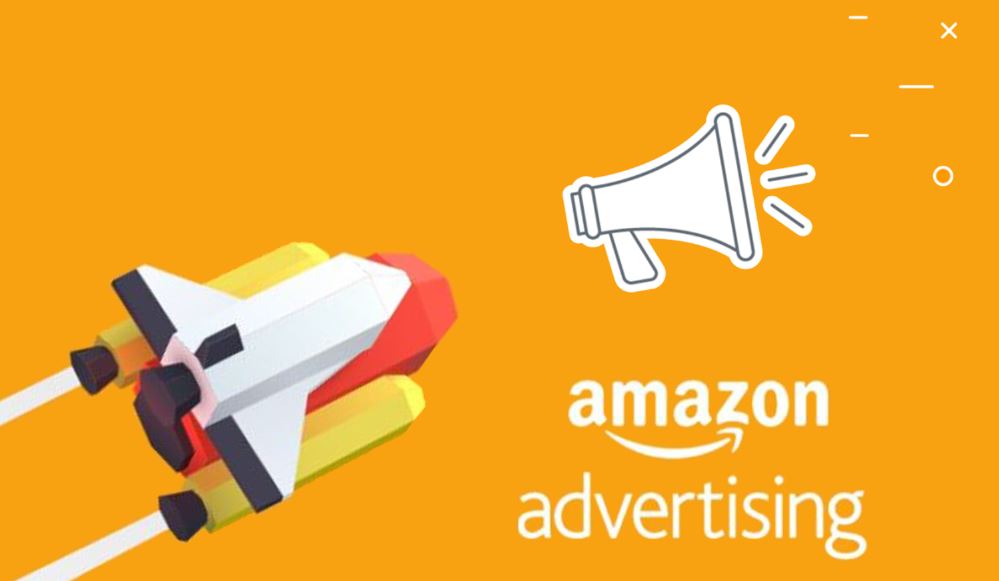Investing in loss
The small-scale strategy presented first doesn’t enable you to use ads to lever the recommendation engine. The sales generated by the ads are too few to have much impact on the algorithms. The second higher-scale strategy gets the ball rolling. It moves the lever, and the recommendation engine switches on. It increases your profits over and above the ads.
With the third strategy of breaking even, the magic of Amazon ads truly begins.
But to succeed as an indie publisher, you need to think strategically. And you can never take anything at face value. Methods and tactics must be considered, verified, tested and discarded – or adopted as appropriate. Not all advice is good. Not all good techniques will work for everyone.
Find what’s best for you, but always seek to change gears to move up to a higher speed. This keeps you ahead of your competition. If you’re on strategy one, consider how you can get to strategy two. If you’re sitting on strategy two, consider moving to strategy three.
But the fourth strategy is potentially the most profitable of all. It’s also the riskiest. For that reason, it’s not for everyone. I include it here because this is an advanced book. You’ll see this strategy at play on the tops of bestseller lists if you study them carefully.
Is it for you? That’s for you to decide. I wouldn’t try it until you’ve mastered the first three. This gives you the background knowledge to apply it best. It also gives you the confidence to pull the hardest strategy of all off. And you do need confidence for this strategy. You want to know before you begin that your books resonate with the target audience. You want to know that they convert well.
There are two main ways this invest-in-loss strategy works. This is the first.
You have a new release. It’s either book one of a long series, and several further books in this series are already written and available for rapid release at, say, two-week intervals. Or you have a fairly large box set.
And, as I said above, you have confidence born of experience that your books sell.
Then you release. As you do so, you apply a range of promotional activities as per normal. You’ll use your mailing list. You might price at 99 cents temporarily. You’ll probably have a bunch of Facebook or BookBub campaigns going. Overarching everything, you have Amazon ads running.
And you don’t budget and bid to break even. You go higher than that. Especially, most especially, with Amazon ads.
All these things together are working to give you momentum. They’re giving you the best possible shot at a good sales rank. The lower the better, but you have to hold it there for at least five days. Ten would be better.
The recommendation engine pricks its ears and gets to work like a border collie rounding up sheep. Your book is in also-boughts and emails. It’s on Hot New Release lists and Bestseller lists. It’s everywhere, and it has momentum.
It’s also costing you money to promote. You’re spending a lot at this point. It can be difficult to make a profit even with bids of, say, 60 cents. But you’re not after profit just at this point.
You’re after steady sales at a great sales rank. People in this phase bid as high as $2.00 to $5.00. Some even higher.
It’s worth reminding you at this point that bid price is not the cost per click. CPC is sometimes 20 to 30% lower.
After five to ten days you adjust all promotions and ads back to break-even levels. This pretty much means stopping everything except Facebook and Amazon ads because they’re the only ones that have the potential to run at profit or break-even points.
I said to adjust things to break even, but I meant with one exception. Keep your Amazon ads running at high bids. Turn off ads and keywords that aren’t working, but leave the ones that convert well as they are for the moment, even if they still run at a large loss.
What does all this achieve?
The answer comes in two parts. First, you achieve momentum in the store. Your book is everywhere. If it resonates, it’ll stick. It’ll keep that great rank for a long time. The slide down the lists will be slow instead of fast. For weeks or months or even a year, your book will generate great revenue. You’ll have operated at a loss for a few weeks. Perhaps a big loss of several thousand dollars. But, if the strategy works for you, you’ll earn that money back in short order and then ride a wave of profit for a long time afterward.
The second part is this. Amazon ads do something that no other ads can do.
It’s called seeding. I discussed it in the first book of this series. What is it?
Relevance is a huge factor in Amazon ads. We’ll go into details later, but for now it’s enough to know that Amazon rewards relevance and punishes irrelevance. This is part of their customercentric approach. They always try to put books in front of people that they want to buy.
And you can actively grow relevance by advertising a book on a free or 99-cent promo via Amazon ads on highly targeted products. This works better than full price because click through is higher and conversion rates are at least double. Converting, again and again, off a keyword shows Amazon that your book is relevant to that keyword. So they give that book preference over less relevant books. Or equally relevant books at a higher price that don’t convert as well because of the price. You get better ad placement higher up the carousel and for a cheaper cost per click.
Alternatively, if you don’t convert, it costs more to get lesser ad placement. In this way Amazon encourages advertisers to put books in front of customers that the customers want to see.
This, like the rest of the strategy, comes with an upfront financial loss. But in exchange you obtain greater relevance and consequently lower costs per click and better ad placement over your competitors. To pull it off though, be sure to target well. If you don’t, your gains will be quickly eroded by low conversion rates after the launch promotion finishes.
There you have it. BookBub and Facebook ads can’t build relevance. For that reason, I suggest you fund Amazon ads to a higher level than the other options. Keep that funding going while you continue to discount the book, and then switch to full price and reoptimize your ads so they work toward the break-even point again.
There’s another thing to note here. People often talk about discovery ads where they identify good and bad keywords. When they have a bunch of good keywords, they kill off the old ads and start new ones with just those.
This will probably hurt you. It’ll especially hurt you if you’ve built up relevance.
Why?
Because you lose that relevance when you start a new ad. You lose it like it never existed. This concept goes against what many people teach about advertising books. They say ads die and you need to kill them off and start new ones. Or find all your good keywords and put them together. My advice is this. Never kill an ad or keyword that’s working.
This is what Amazon themselves have to say in their help pages.
When you copy a campaign, you essentially create a new one, and it behaves as if it has no previous performance history (which is a key input used by Amazon’s algorithms to identify the optimal bid under dynamic bidding) – so the original campaign will have an unfair advantage over the copied one.
I could wish Amazon gave us a more transparent insight into how their ads work, but that’s pretty clear. Copied ads don’t piggyback performance history with them. Does this apply to new ads? There’s no reason to think it doesn’t.
So if a keyword or ad is working, don’t copy it or start new ads. If it ain’t broke, don’t fix it. Just delete those parts that aren’t working, and keep the rest.
I have to advise again that this last strategy is potentially highly rewarding (it’s worked great for me) but it’s also risky. Very risky. I’m not recommending it, but merely showing you the strategies at play on the Amazon marketplace. Don’t even think about trying the strategy unless you know that your books generally sell well and you can absorb the loss if it doesn’t work.
But now that you know how it works, keep an eye out for it. You’ll see it being employed again and again. Watch the authors who do it. Study their methods. Observe how long they discount. Estimate their ad costs. Estimate their profit or loss during the launch phase, and then a month later. Keep watching and estimating for several months. Then decide if the strategy is for you.
There’s another variation on this strategy. Again, if you look, you’ll see it at play frequently. It goes like this.
Take a boxed set enrolled in the Kindle Unlimited program, and preferably a large one close to the 3000-page KENPC limit. It might be an old or a new release, but it works much better new. Price it at 99 cents and advertise it heavily with Amazon ads.
Conversion rates here are about one for every five clicks, which is very high. But again, this depends greatly on how well the book resonates with the target audience.
Conversions on a boxed set priced about $7.99 tend to run at about one sale to two full page reads. Dropping to 99 cents mixes this up. At such a bargain price, most people buy now instead of borrow. But you’ll still get some borrows, and these pay at the normal rate per page read.
This is not a scenario in which you can profit from the ads.
Not directly. But that’s not the strategy. Once again, it relies on obtaining a good sales rank. A great sales rank is better. Even royalties on a 99-cent price point rack up if you sell thirty or more a day. More importantly, the page reads creep up as the rank drops.
Assuming the book resonates, it will climb steeply in the ranks. It gets the recommendation engine all excited like a kid at Christmas who still believes in Santa, and you have a hit.
The ads spur organic sales. Organic sales and ads combined improve relevancy on keywords that convert and Amazon gives your ads more oxygen. Everything is spurring the sales rank, including that you populate high on the also-boughts of bestselling books, themselves with great sales rank, giving you free visibility. And the page reads pour in.
This can turn a seeming loss into a profit. When the dust settles down, optimize the ads as best as possible, but expect them to run at a loss. That is, until you factor in the page reads not reported in the ads dashboard.
I suspect Amazon will change this in the relatively near future so we can better analyze ad performance. But directly or indirectly attributed, those page reads are there. Just keep in mind that the ratio of sales to borrows increases when you lower the book price.
This strategy has another benefit. It grows your mailing list. This will translate into extra sales in the future. Not everything is about profit in the here and now. Look at the big picture, and look to the future.
Again, this is a risky strategy. I’m not advising it, but merely showing you what’s possible and what happens in the marketplace. Once again, study the authors doing this. I shouldn’t say it, but books like the one you’re reading now are a poor substitute. The best teachers are the strategies and tactics at play in the marketplace, if only you stop to observe the secrets in plain sight.
There you have it. These are the four main strategies of Amazon ads.
Keep in mind which strategy
applies to you now, or that you may want to move up to, as we go through what
follows. Keep it in mind whenever and wherever someone gives advice or comments
on Amazon ads. Filter their advice through your strategy to see if it applies
to what you’re doing, or if it’s
advice for a different strategy that will harm you if you try to implement it
out of place.




